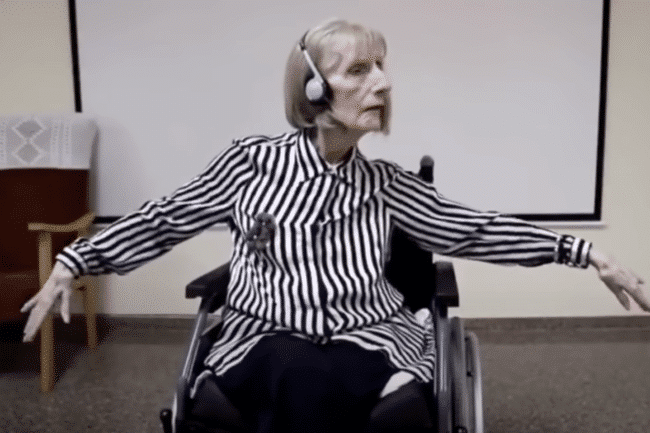Which part of the groove you want them in
If you haven’t seen this video making the rounds already, I think you’d be glad you did. It’s of ballerina Marta C. González, who suffered from Alzheimer’s.
(Rather than stay suspended in blissful reverie afterward, though, please come on back.)
(Ok, thanks.) Shot in 2019, this video has been getting wide airplay this week, and Alistair Macaulay, renowned former dance critic of the New York Times, has been digging into it.
So I’m going to de-romanticize, but I promise a payoff. The video is actually a bit different from what it appears to be.
The young ballerina in it turns out to be a different dancer, Yuliana Lopatkina.
On top of that, the ballet Lopatkina dances is not Swan Lake, but rather The Dying Swan.
Even so, so much is clear to see from from watching Sra. González respond to Tchaikovsky as she does in the video.
If you are a therapist or a specialist in aging, you might see the known power of music to draw people with Alzheimer’s into expressiveness, to reduce agitation, to strengthen memories and language abilities, and to improve physiology.
If you are an artist, you see an affirmation of the ennobling might of music and dance. You see the curvature of Sra. González’s refined hands, the exaltation in her chest, her clear sense of the proper way this movement had to be executed to be done right. The woman’s high standards are evident.
As human beings, we see someone (whom otherwise we might have thought of as having lost what made her most essentially her) as a woman who has a thing to accomplish and a very specific way of doing it. It is that way, rather than the what, that captivates me.
The music suggests to her something that must be done with a particular turn of the shoulder, inflection of the torso, and direction of attention — each of those things and no other. Her way is what we learn from her.
Indian teaching has a concept of something called samskaras, mental habits or “grooves” that we are more likely to fall into because we have been there before. We keep taking the wrong way home from a place we don’t go to often because we took that wrong left the last time, too. We reach for the chocolate at 3:00 p.m. because that’s what’s given us a jolt out of the funk (even if momentarily) before.
And we see ourselves and our stories in fixed ways because we learn the genres, the choreography, early on.
Yet the happenings of our lives can be framed in infinite ways.
Our job in life, if you’re interested in samskaras, is to soften our tendency to become slavish to these tendencies, to give ourselves choice rather than automaticity.
One of the things I always say now when training new Conductors of THE HUMAN JOURNEY® in helping families through life challenges is that this game-based process is designed to help people “hold their own stories a little more lightly, and others’ stories a little more tenderly.” In other words, to soften the grooves that may prevent one humanity’s touching another.
How are people, in the midst of grief or sorrow or alienation, supposed to do that? By keeping the grooves that matter and softening the ones that don’t.
Much as we desperately want to romanticize the historical footage actually being of her, dancing the same choreography she’s showing us now, and of that choreography actually being Swan Lake, she’s not actually dancing the “real” Swan Lake. Indeed, despite the beautiful score, either one of them is doing actual Swan Lake choreography in this case.
Yet, as an older woman, with the soundtrack in her ears, she is transcendently beautiful in what she’s doing.
Sra. González dances from her heart and with the exquisite technique she’s learned from years of training and love invested in her art form. She’s able applied what she knows in her bones to create a new dance, a new construction of the pieces of her experience, keeping the grooves that matter and softening the ones that don’t.


